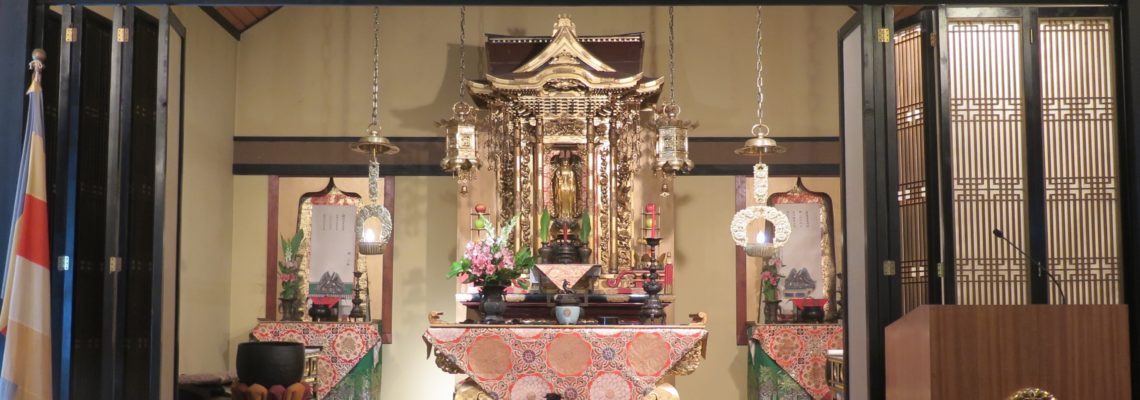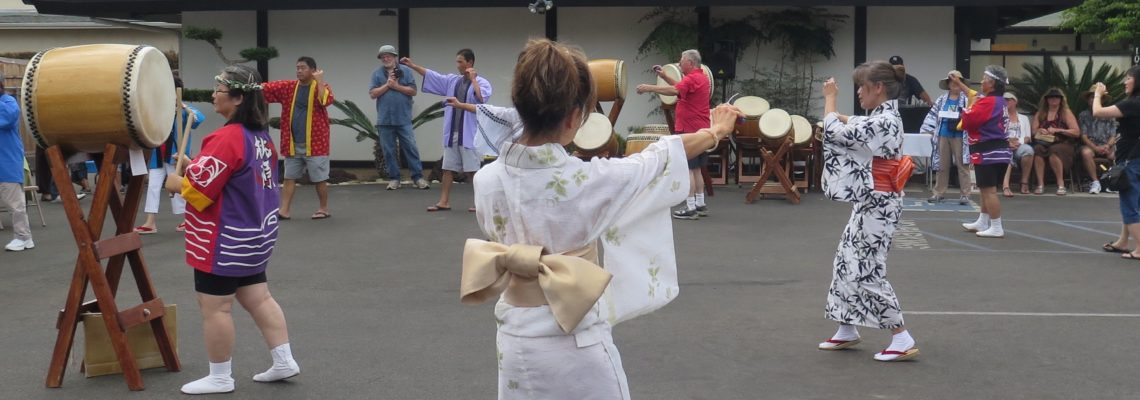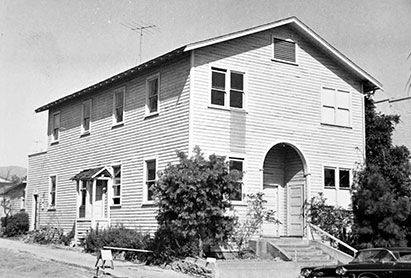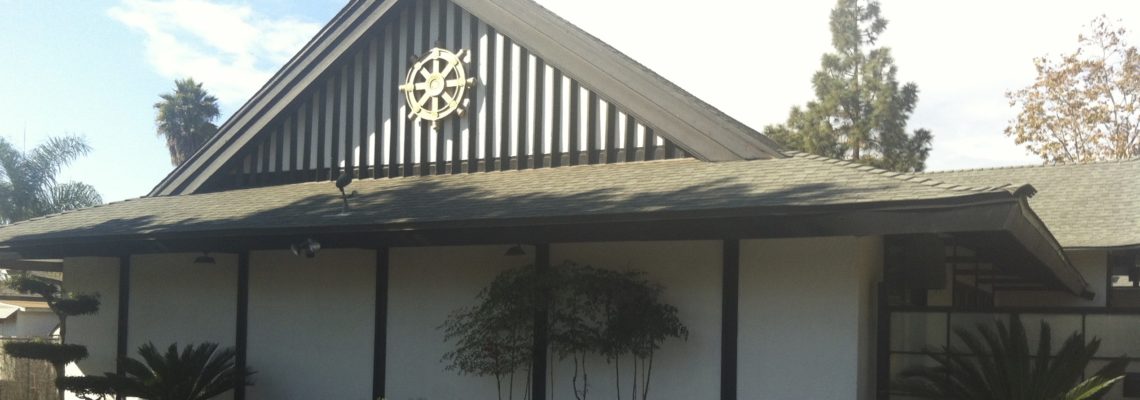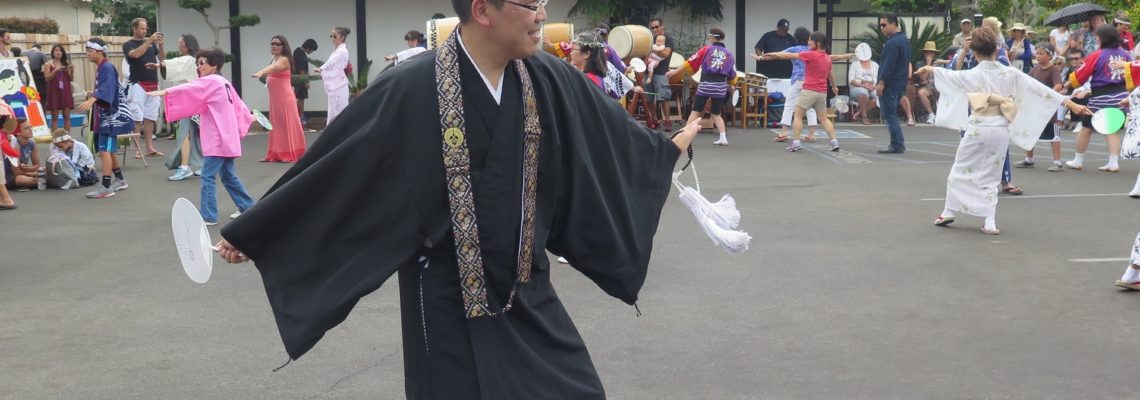According to the Santa Barbara Historic Trust, the heart of El Presidio State Park was once the cultural, commercial, social and religious center of Santa Barbara’s Japanese American community. The first Japanese settlers arrived in 1895, and in 1910 census lists just over 200 Nikkei (Japanese – American born) living in Santa Barbara and Montecito. Many immigrants found work serving residents and visitors to these affluent coastal areas. Some lived on estates as domestics and gardeners, while others operated businesses that catered to a primarily non-Nikkei clientele. A Japanese community grew in the area around the intersection of E. Canon Perdido and Anacapa Streets and by the 1920s and Congregational and Buddhist Churches joined them on E. Canon Perdido, and served Santa Barbara’s Japanese-American population, which numbered about 500 on the eve of WWII.
They began to practice their Buddhist faith in an old adobe structure situated where the post office now stands as a small Japanese community lived and worked in the neighborhood around the current Presidio until 1941.
The neighborhood had boarding houses, bathhouses, a cleaner, a restaurant, a pool hall and a grocery store, as well as the offices of the Japanese Association, two cultural centers. In 1922, in spite of the alien laws which forbade non-whites to own land, the community established the Asakura Hotel, built a Buddhist temple and a two-story wooden congregational church in the area,. Regular services were held there until 1941. After the attack on Pearl Harbor, Japanese-Americans were imprisoned in internment camps, their property confiscated and their buildings destroyed.
THE CHINESE.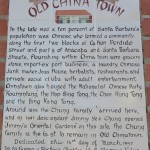
Around 1870, Santa Barbara had a thriving, self-sufficient Chinese community that provided jobs, services and education to their own population. Since they considered their stay in the United States as temporary, they tended to live in the same residential area, mainly around Cañon Perdido Street, so as to maintain their native dialects. In addition to doing contract labor with local businesses, many found employment in the fishing industries, especially harvesting and processing abalone for export back to China via San Francisco.
The Chinese New Year was a significant celebration for that community, who followed the Confucian traditions and made offerings at family shrines. In 1898, the San Lung Company imported a shrine from the Guangdong Province in China, and assembled it on land they donated to the community. The gilded shrine, graced by elaborately carved dragons and phoenixes— spiritual intermediaries in Chinese mythology, was custom-made and paid for by members of a branch of the Chee Kung Tong, a Chinese benevolent society, and dedicated to Kuan Kung, God of Brotherhood, Fairness and Loyalty. The shrine is on permanent display in the Santa Barbara Historical Museum on De la Guerra Street.

